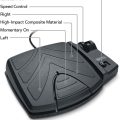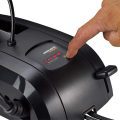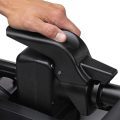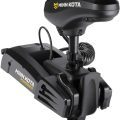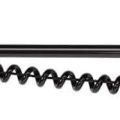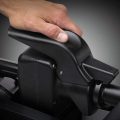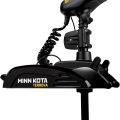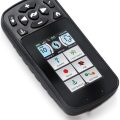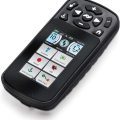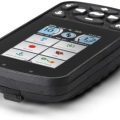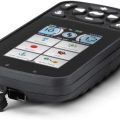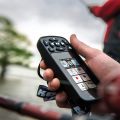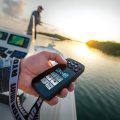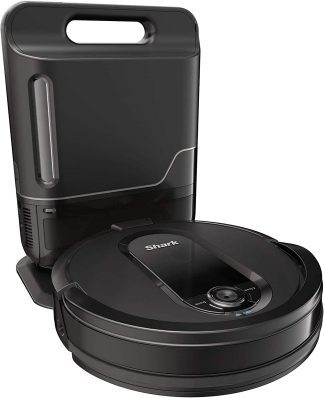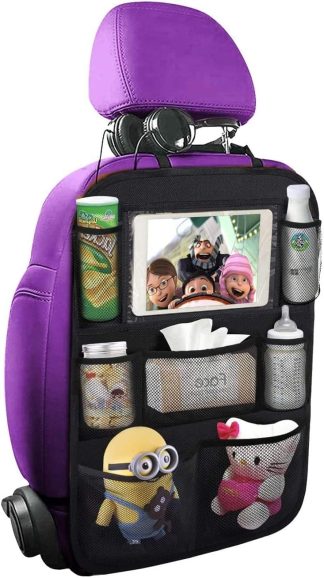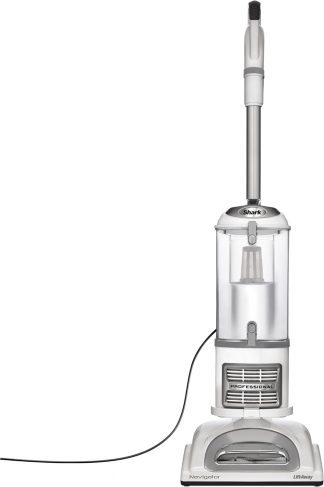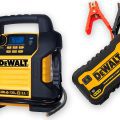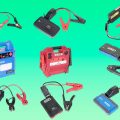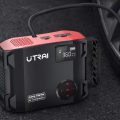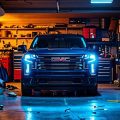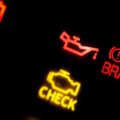Choosing the right lbs motor for your boat can feel overwhelming, and trust me, you’re not alone in this. After diving deep into research, I discovered a whole bunch of factors that you just can’t ignore when it comes to picking the one of LBS motors.
This guide is designed to help streamline your decision-making process. Let’s power up your boating adventure together!
Key Takeaways
Choosing the right trolling motor involves considering factors such as energy consumption, thrust, and shaft length to ensure efficient movement through water without draining batteries quickly. Electric trolling motors, especially those designed for use in both fresh and salt water environments, not only provide quiet operation that avoids spooking fish but also promote environmental sustainability by reducing emissions compared to traditional gasoline engines. The durability of electric motors like the Minn Kota Terrova in salt water, coupled with the importance of rinsing them with fresh water after each use, highlights their advantage in terms of maintenance and environmental considerations.
Bow-mounted motors like the Minn Kota Terrova offer more precise control and are suited for serious anglers, while transom-mounted motors are easier for beginners to install and operate.
Adjustable depth and angle capabilities in an LBS motor can greatly improve maneuverability in different fishing environments, from shallow waters to rough conditions.
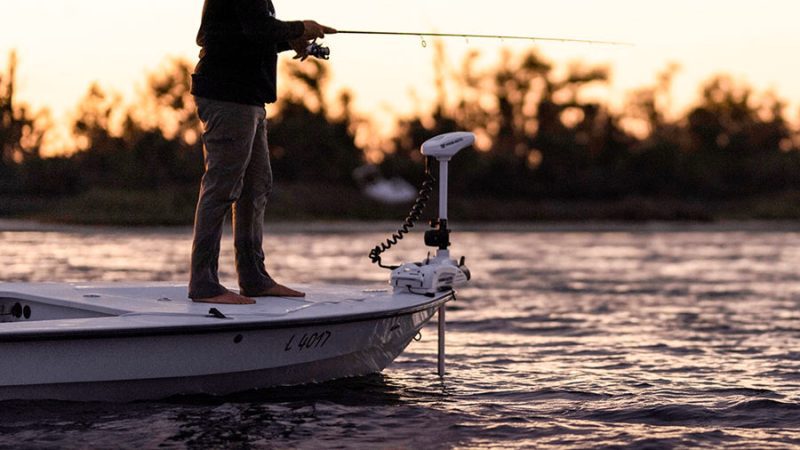
Understanding the Importance of LBS Trolling Motors for Boating
I need a reliable LBS motor for my fishing trips. It’s all about finding that quiet spot where I can think and fish without interruptions. The Minn Kota PowerDrive 70, an efficient electric trolling motor, has been a game-changer for me.
Its 60 lb thrust and smooth operation let me sneak up on fish in both fresh and saltwater without scaring them away, showcasing its versatility and technical superiority as an electric trolling motor suitable for diverse environments. It’s important to rinse the motor with fresh water after each saltwater use to extend its lifespan. This electric outboard gadget, exemplifying the advanced features and technical specifications of electric trolling motors, such as power output and thrust capabilities, has made reaching secluded spots easier, enhancing my boating experience significantly.
Understanding the power consumption, along with how to manage battery life efficiently, is crucial. This knowledge ensures I spend more time fishing and less worrying about getting back to shore.
With features like the Digital Maximizer, which prolongs battery endurance, I make fewer trips replacing or recharging batteries. Next up, we’ll discuss key features of a good LBS motor to look for before making your pick.
Key Features of a Good LBS Motor
Finding the right Trolling motor means looking at its power use, push force, and pole length. These factors determine how well it moves boats like kayaks or inflatable watercraft through water. Understanding the max thrust of a motor can help boaters choose a motor that balances power consumption with efficient movement through water.
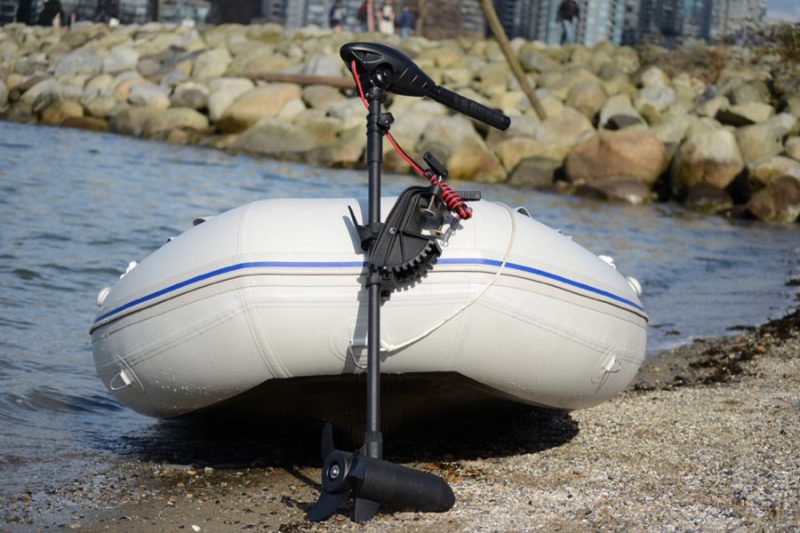
Power Consumption
I’ve learned firsthand how important it is to keep an eye on the power use of your trolling motor. The Minn Kota Terrova 80 lb model I use needs a 24-volt system. This tells us that its power needs are quite high since it offers a hefty 80 pounds of thrust. Understanding the ‘max’ current draw of this motor is crucial for better battery management and calculating its equivalent horsepower, ensuring efficient energy use and prolonging battery life.
Operating such a thruster means paying attention to battery life becomes crucial, especially when planning longer trips out on the water.
Managing the energy consumption of your boat’s electric outboard motor isn’t just about having enough battery juice for a day’s journey; it also involves smart choices like using chargers efficiently and knowing when to give your equipment a rest.
My experience showed me how leveraging advanced features, like the i-Pilot Link System for precise GPS control, can help in conserving battery by automating some tasks that would otherwise consume more power if done manually.
Keeping track of this helps ensure I don’t get stuck with drained batteries far from shore, making every fishing trip smoother and less stressful.
Thrust
Shifting gears from how much energy our motors use, let’s talk about thrust. This is the muscle behind our boat’s movement, pushing us through water like a knife through butter. The Minn Kota Terrova 80 lb 24V Bow-Mount Trolling Motor flexes with 80 pounds of push-back against the water.
It feels powerful under my feet as it propels my boat forward, demonstrating just what those numbers mean in real river conditions.
Using this motor on several fishing trips, I’ve learned that matching your thrust to your vessel and activity makes all the difference. Too little and you’re struggling against the current; too much and you’re overworking your setup for no gain.
With my 60 lb thrust trolling motor, balancing power consumption with enough force to keep me steady even in choppy waters has turned into a seamless dance. Trust me, getting this balance right means more time fishing and less time fighting with your gear.

Shaft Length
Shaft length on your trolling motor matters more than most fishermen realize. I learned this firsthand when picking out my first Minn Kota Terrova with its precise 60-inch shaft for controlling my boat.
This ideal length makes sure the propeller stays submerged, offering efficient push even in choppy waters without overdoing it and risking damage to your craft.
Choosing the correct shaft size is not just about performance; it’s about getting the most from your battery power too. Take the Minn Kota PowerDrive as another prime example—it also sports a 60-inch shaft that’s perfect for providing steady propulsion in freshwater without draining your battery faster than necessary.
It struck me how crucial balancing these aspects is for any successful fishing trip.
The right shaft length turns good boating into great fishing.
Now let’s shift our focus to understanding how different types of LBS motors operate, considering their mounting positions and water environments they best adapt to.
Types of LBS Electric Motors: Bow Mounted Vs. Transom-Mounted
Deciding between bow-mounted and transom-mounted LBS trolling motors is a big part of setting up your boat for success. Each type has its own set of benefits that could make a significant difference in your fishing adventures. Let me guide you through the main differences.
Bow-Mounted Trolling Motors:
- Placement: Installed at the boat’s front, providing direct control.
- Control: Allows for highly accurate steering and positioning, essential for tactical maneuvers.
- Use Case: Perfect for serious anglers who require exceptional boat control to navigate challenging fishing spots.
- Thrust: High-thrust models, such as the Minn Kota Terrova, are designed to handle larger vessels.
- Water Type: Both freshwater and saltwater variants are available with features designed to resist corrosion.
- Technology: Offer advanced technology options including GPS navigation and autopilot capabilities.
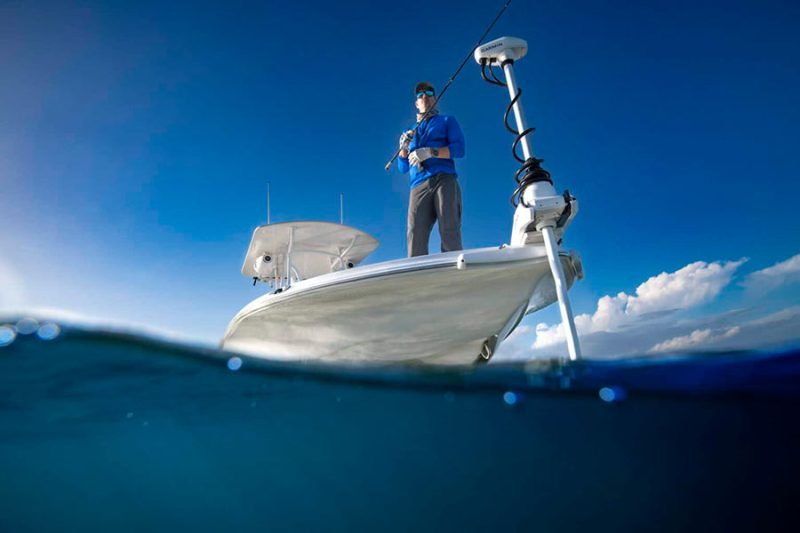
Transom-Mounted Trolling Motors:
- Placement: Affixed to the boat’s rear; straightforward setup.
- Control: Simplicity in operation makes them particularly user-friendly for novices.
- Use Case: An excellent choice for recreational fishing and users of smaller boats.
- Thrust: Generally offer less power, making them more suitable for compact watercraft.
- Water Type: Mainly intended for freshwater use, though select models can be used in saltwater environments.
- Technology: Focus on basic propulsion without the complexity of high-end technological enhancements.
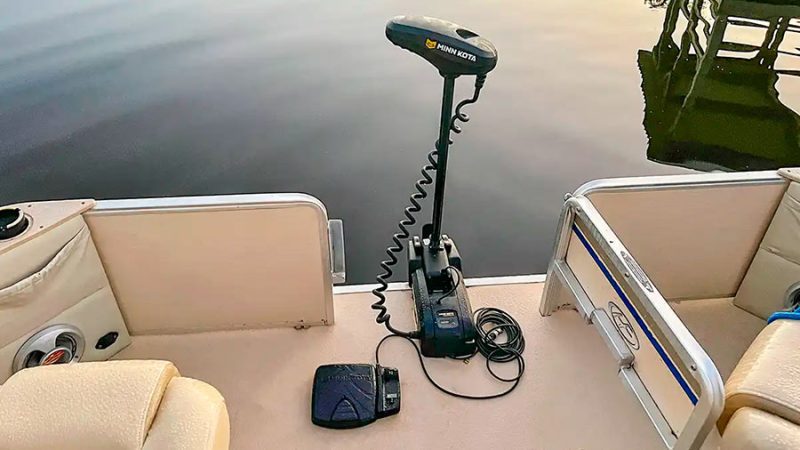
Bow-mounted motors, like the Minn Kota Terrova, shine for their advanced control features, making them a top pick for serious anglers. On the other hand, transom-mounted electric motor provide a straightforward, easy set-up, perfect for casual outings and new boaters. Keep in mind your boat size, water type, and fishing style when choosing. The right motor will enhance your fishing experience, no doubt.
Choosing the Right LBS Trolling Motor Based on the Type of Waterbody: Fresh Vs. Saltwater
Picking the right Trolling motor for your boat matters a lot and it depends if you’re fishing in fresh or saltwater. Freshwater trolling motors are great, but they might not last in saltwater. Salt eats metal, and without proper care, corrosion can significantly shorten the lifespan of your motor. When using electric trolling motors in salt water, it’s crucial to choose models designed with corrosion resistance in mind. Additionally, after each sea water use, washing the electric motor with fresh water can help extend its lifespan.
Also, think about the power you need. Bigger water often means needing more thrust to move through waves or tides. In salt water environments, comparing the thrust in pounds to horsepower becomes essential to understand the practicality and limitations of your electric trolling motor. Check out motors like Minn Kota’s models that work well in both types of water.
They give you the power and durability needed, whether casting lines in calm lakes or navigating the challenging conditions of rough ocean waters.
The Importance of a Properly Designed Propeller in LBS Motors
A properly designed propeller makes all the difference in trolling electric motors, especially when it comes to cruising through tough spots like weeds and underwater debris. Take the Minn Kota Terrova 80 lb 24V Bow-Mount Trolling Motor for example – its Weedless Wedge 2 Prop design helps me effortlessly move through thick vegetation without a hitch.
It’s not just about avoiding snags; this kind of propeller ensures my boat gets more efficient power use and better control, no matter where I’m fishing.
Efficiency is key here. With a well-designed propeller, I’ve noticed I use less energy to get around, which means my 12 volt trolling motor run doesn’t drain as fast and I can stay out on the water longer.
It’s simple: better design equals less hassle and more fishing time. This ties back to why choosing the right props for your LBS trolling motors isn’t just smart; it’s essential for any serious fisherman who values their time on the water.
The right propeller turns challenges into smooth sailing.
Importance of Choosing an Electric Motor with Adjustable Depth and Angle
Choosing an LBS trolling motor that lets me adjust both depth and angle is a game-changer on the water. This feature gives me control over my boat in different fishing environments. If I’m in shallow waters, adjusting the depth keeps my propeller from hitting the bottom.
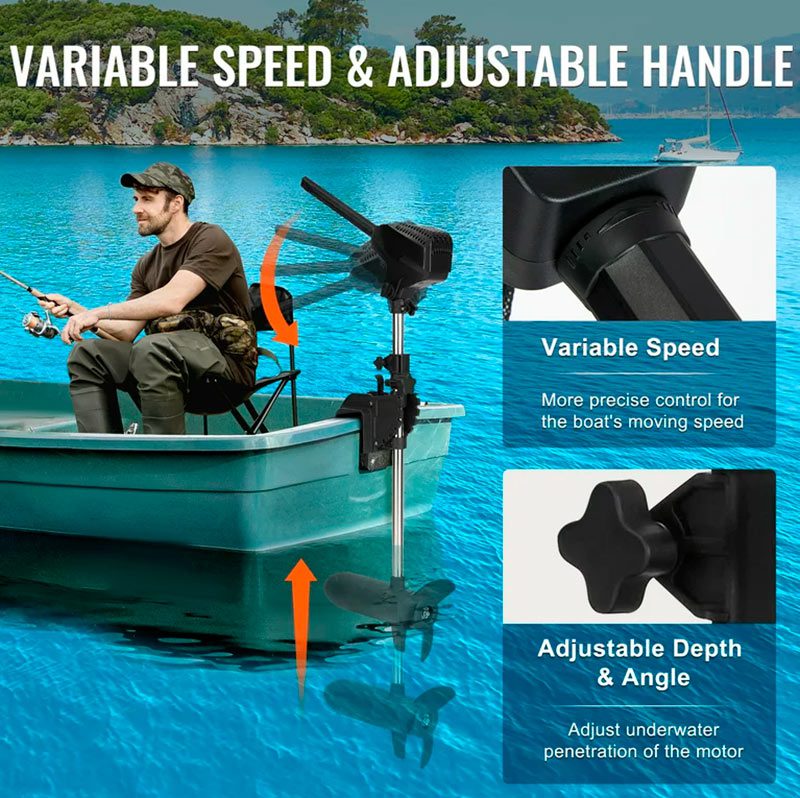
In rougher conditions, changing the angle helps maintain stability and maneuverability. It’s all about making those small tweaks for a smoother ride.
Having this ability means I don’t have to fight against the boat or worry about getting stuck. It makes steering through various spots easier, especially when chasing after fish that like to hide in hard-to-reach areas.
This isn’t just convenient; it’s essential for anyone serious about their fishing trips. Whether I’m out on calm lakes or facing unpredictable coastal waters, being able to fine-tune my approach with an adjustable-depth-and-angle LBS motor has taken my boating experience to another level.
Top-Notch Selection: Minn Kota Trolling Motors – Boater’s Premier Choices
When it comes to mastering the tranquil waters and ensuring a successful day of fishing, the choice of a trolling motor can be as pivotal as the angler’s skill. This is why we have meticulously combed through the market to bring you a review of Minn Kota trolling motors, known for their reliability, innovation, and advanced features. This lineup not only showcases the crème de la crème of trolling motors but also reflects the popularity and high ratings among boating enthusiasts. Our focus on Minn Kota is no coincidence; as a brand, they stand at the forefront of the industry, setting standards with every product released.
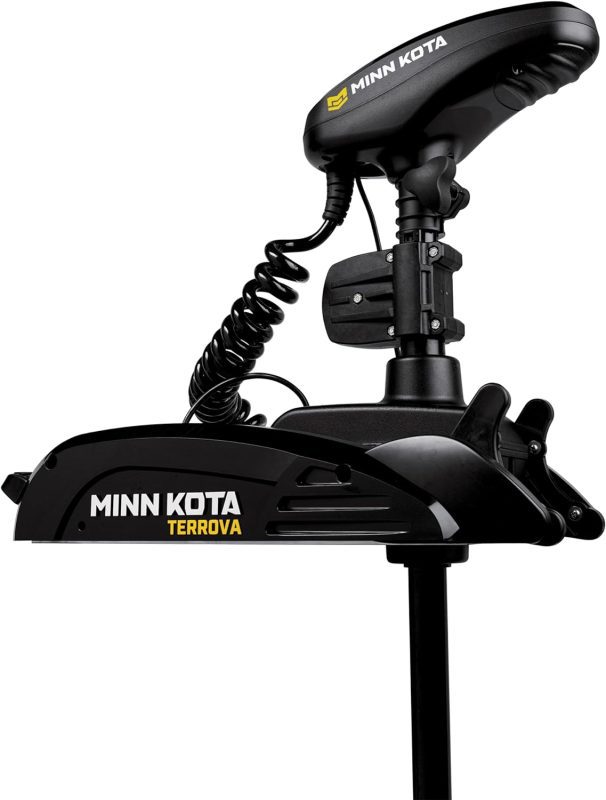
Within our handpicked selection, you will find products that are not only at the apex of their class but also encapsulate a diverse price range, accommodating the budget-conscious buyer while satisfying those who seek the epitome of technology in their aquatic ventures. Each trolling motor boasts its own unique set of features, such as the Deploy-Assist Lever for swift deployment, Side-To-Side/Electric Foot Pedals for meticulous control, and the energy-efficient Digital Maximizer. The inclusion of the MK-106D On-Board Charger with some models adds further convenience and longevity to your excursions.
A standout among these maritime marvels is the Minn Kota Terrova with its MEGA Down Imaging and i-Pilot Link GPS, catering to the tech-savvy angler who demands absolute precision and convenience. This high-end model elevates the fishing experience with unparalleled features and epitomizes the technological advancement in trolling motors. On the other hand, the Bluetooth i-Pilot Link GPS System Remote showcases the cutting edge of remote control capabilities, embodying the perfect blend of innovation and practicality for modern boaters.
Whether you seek the silent stalking of a prized catch or the effortless navigation of your favorite waterways, our selection promises to enhance your marine expeditions. These Minn Kota trolling motors, ranging from approximately $892.19 to a high-end price point of $2531.99, cater to a diverse spectrum of preferences and purposes, guaranteeing that your investment will usher in a new chapter of aquatic dominance. Rest assured, these products have been chosen with the utmost care for the buyer, ensuring that every anchor drop and course set with a Minn Kota will be as smooth as the calmest of seas.
| Name | Brand | Rating | Main Characteristic | Special Distinguishing Features | Price |
|---|---|---|---|---|---|
| Minn Kota 1358739 PowerDrive Trolling Motor | Minn Kota | 4.6 | 54″ Shaft, 12V/55 lbs Thrust | Deploy-Assist Lever, Digital Maximizer, Weedless Wedge 2 Prop | N/A |
| Minn Kota 1358763 PowerDrive Trolling Motor | Minn Kota | 4.8 | 60″ Shaft, 24v, 70 lbs Thrust | Built-in Universal Sonar 2, Digital Maximizer, Side-to-side Foot Pedal | $1080.42 |
| Minn Kota Terrova Freshwater Bow-Mount Trolling Motor | Minn Kota | 4.5 | 24-Volt, 80-Pound | I-Pilot Link GPS, Universal Sonar 2, Multi-function Foot Pedal | $2411.83 |
Minn Kota PowerDrive Trolling Motor 54″ Shaft 55 lbs 12V with MK-106D Charger
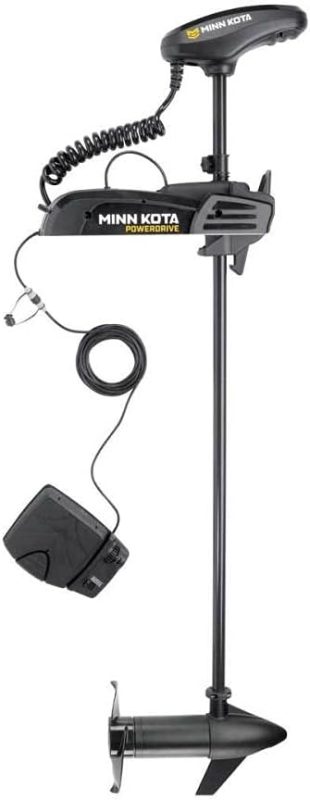
- 12V/55 lbs thrust suitable for small to medium boats
- 54″ composite shaft suitable for various boat sizes and water conditions
- Electric operation mode for convenience and easy control
- Constructed with durable alloy steel
- Includes MK-106D On-Board Charger for maintaining battery life
- Manufacturer provides a warranty (details should be checked with the manufacturer)
- Bow mounting type optimizes space and boat control
- Positive feedback on the built-in charger eliminating the need to carry a separate battery charger
- User satisfaction with the motor’s performance for pan fishing
- Only recommended for fresh water use, limiting versatility
- Some users might find foot pedal controls less practical or durable
- Complaints about the difficulty of deploying and stowing the motor
- Foot pedal ‘go’ button can become difficult to activate over a short period
- Perceived fragility of the foot control by a user
Minn Kota PowerDrive 70 lbs Thrust, 60″ Shaft, Freshwater Bow-Mount Trolling Motor with US2 & Maximizer
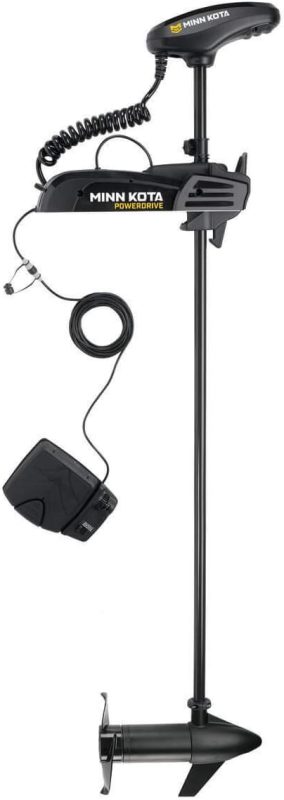
- Features big-time technology with trusted power and easy operation for everyday use
- Includes a durable and sleek mount, built to withstand rough conditions
- Enhances boat functionality significantly
- Some users may experience difficulty finding compatible parts
- May require additional purchases for complete integration with certain fish finders
- Difficulty in finding the adapter cable for certain fish finder models
Minn Kota Terrova 80 lb 24V Bow-Mount Trolling Motor with MEGA DI & i-Pilot Link GPS
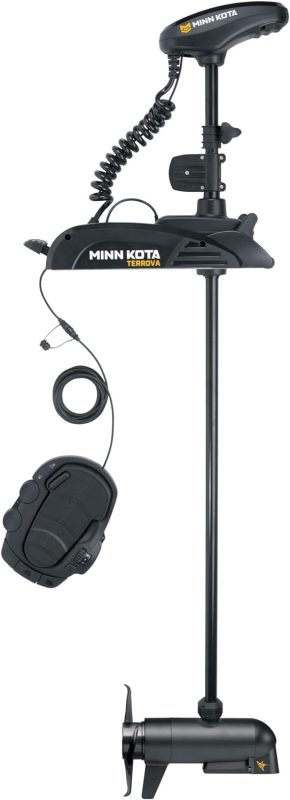
- Features an easy-to-deploy system with fallaway ramps and spring-loaded Lift-Assist for convenience
- Integrated GPS with i-Pilot Link for precise boat control and navigation, and compatibility with Humminbird fish finders
- Users report the remote control and Spot-Lock features enhance their fishing experience
- Many users find that this motor provides impressive maneuverability and power for various water activities on different watercraft types
- Limited to compatibility mostly with Humminbird products for full features utilization
- Higher cost due to advanced technology and features included
- One review mentioned the shipping spacer damage and concern about quality on arrival
- Some complaints about the quality of included accessories, such as the heading sensor (referred to as ‘puck’)
Minn Kota Terrova i-Pilot Link Remote, 1866650 Bluetooth GPS System Control
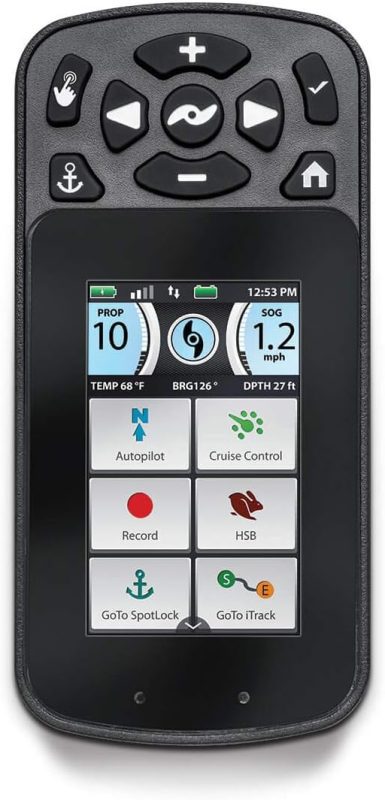
- Customizable touchscreen display provides easy navigation and information access
- Waterproof and powered by a rechargeable battery
- Compatible with Ulterra models for Auto Stow/Deploy and Power Trim control
- As expected, it arrived in a timely fashion and it works great!
- Great product
- Charging cord and lanyard not included with the purchase, leading to extra expenses
- The remote does not work with all trolling motors, compatibility issues reported
- The charging cord is extra
- Buyer beware!! This remote doesn’t work with all trolling motors it only works with very few units
How to Operate an LBS Motor: Speed Control and Gear Adjustment
I recently got my hands on the Minn Kota Terrova 80 lb 24V bow-mount trolling motor, and let me tell you, it’s a game-changer for any fisherman. Its advanced navigation features make controlling speed and direction a breeze. Here’s how I do it:
- First up, get familiar with the multifunctional foot pedal. This gadget lets you easily change the motor’s speed and steer your boat without having to reach down to adjust anything manually.
- To adjust the speed, press down on the right side of the pedal to go faster or the left side to slow down. It’s smooth and responsive, making it easy to find that perfect trolling speed.
- For steering, push or pull the top of the foot pedal in the direction you want to go. The responsiveness is top-notch, giving you precise control over where you’re headed.
- Engaging the i – Pilot Link System ramps up your control even further. With this system, I manage my motor’s speed and steering right from a touchscreen remote or my smartphone.
- Adjusting gears is straightforward too. A simple push on a button changes your propulsion mode, allowing for smooth transitions from high-speed cruising to gentle trolling.
- The Weedless Wedge 2 Prop design deserves a shoutout here as well; it effortlessly glides through underwater plants and obstacles, ensuring nothing messes with your speed or direction adjustments.
- Always keep an eye on power consumption by checking your battery charger regularly. Since it runs on a 24-volt system, maintaining optimal battery levels is crucial for uninterrupted use.
- Lastly, fine – tuning your motor’s shaft length according to water conditions can significantly impact performance—longer shafts in deeper waters and shorter ones when things get shallow.
Operating this LBS motor really comes down to understanding these key components and how they interact with one another during use—power consumption management, gear adjustments for optimal thrust levels, and maintaining proper propeller function play significant roles in achieving that seamless boating experience we all aim for.
The Environmental Benefits of Using Electric LBS Motors
Adjusting depth and angle ensures the efficiency, but shifting to electric trolling motors takes our commitment to the environment up a notch. I’ve seen firsthand how these motors make a difference.
They’re silent runners, slicing through water without disturbing the peace beneath. This quietness matters more than you might think—it keeps fish from getting spooked and protects the serenity of our fishing spots.
Electric trolling motors have another card up their sleeve: they’re champions of clean energy. Trading in traditional gasoline engines for these electric alternatives cuts down on emissions that pollute air and water, safeguarding habitats we hold dear.
Their efficiency is unmatched too; using less power doesn’t just mean saving on energy resources—it translates into longer trips out on the lake with a smaller ecological footprint.
These motors show us that taking care of nature doesn’t have to mean compromising on quality time casting lines or the thrill of reeling in a big catch.
FAQs
1. What makes the LBS motor ideal for inflatable boats and dinghies?
The LBS trolling motor is designed with the right amperage to power inflatable boats and dinghies efficiently, ensuring a smooth sailing experience.
2. Can I find all the necessary installation tools like lag bolts, screws, nuts, and a screwdriver in this set?
Yes, this comprehensive set includes all essential installation tools such as lag bolts, screws, nuts, and a screwdriver to ensure you have everything needed for setup.
3. Do I need special equipment like a drill or pipe for installing the LBS motor on my boat?
No special equipment is required beyond what’s included in the set; however, having a drill might make the installation process quicker and more efficient.
4. How does the LBS motor enhance my boating experience compared to other trolling motors?
The LBS motor stands out by offering reliable performance tailored specifically for rubber boats and vehicles like dinghies through its optimized amperage and durable components included in this comprehensive set.
Conclusion
Picking the right LBS motor to meet your boating needs can turn a good fishing trip into an amazing one. With features like MEGA Down Imaging and i-Pilot Link GPS, you get precision control and easy maneuverability.
The Weedless Wedge 2 Prop lets you glide through vegetation without a hitch. Whether using it in freshwater for bass hunting or in other adventures, these trolling motors offer durability with their composite builds.
They make every outing on the water better, proving themselves as top choices for fishermen everywhere.

Jacob Fitsky
Working on “One Of The Best LBS Motors For Your Boating Needs: Comprehensive LBS Motor Set” was a complex task, demanding hours of diving into technical specifics. I wrestled with understanding nuanced boat mechanisms and even grappled with hands-on tests. But it proved enlightening, defining the zenith of my understanding of LBS motors.


